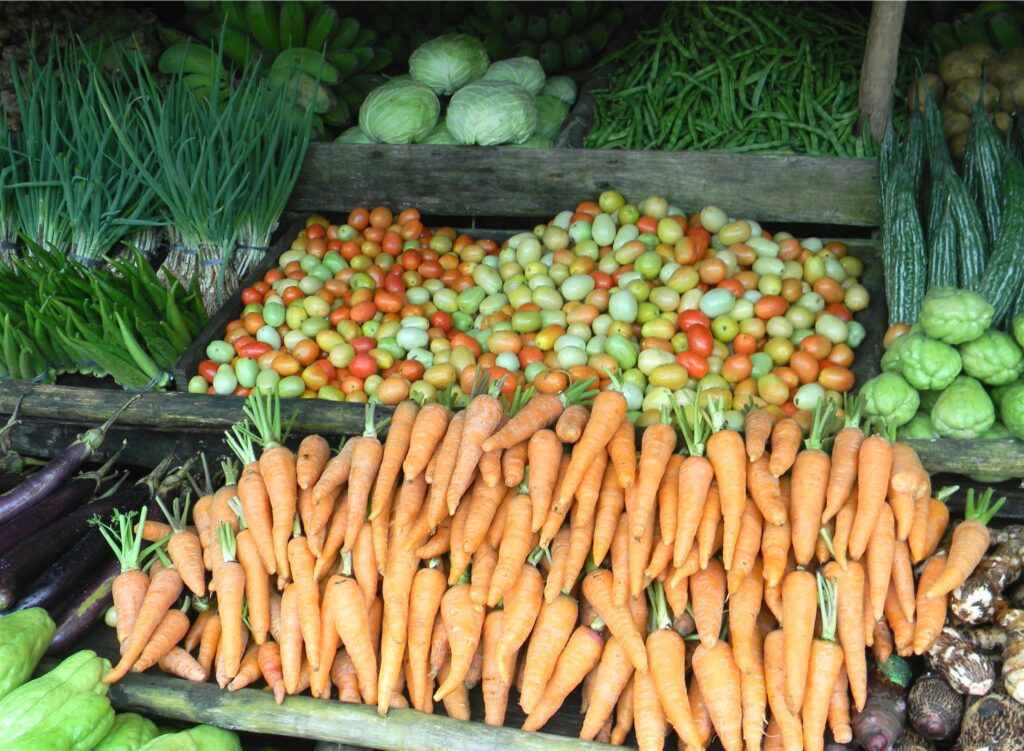Text and Photos by Henrylito D. Tacio
“Unlike most vegetables that carry a high source of one vitamin or another, carrots are concentrated with Vitamin A, beta carotene and fiber, which work together to solve a number of maladies. Whether if you consume them cooked, raw or juiced, carrots will provide your body with its beneficial nutrients,” wrote Ed Robinson in The Health Benefits of Carrots.
Carrots are perhaps best known for their rich supply of antioxidant nutrients. So, it’s not surprising to find numerous research studies documenting the cardiovascular benefits of carrots. Some studies have shown that the cardiovascular system needs constant protection from antioxidant damage. This is particularly true of the arteries, which are responsible for carrying highly oxygenated blood.
A recent study from the Netherlands, in which participants were followed for a period of 10 years, has given us some fascinating new information about carrots and our risk of cardiovascular disease (CVD). In this study, intake of fruits and vegetables was categorized by color: green, orange/yellow, red/purple, and white.
Out of these four categories, orange/yellow (and in particular, foods with deeper shades of orange and yellow) was determined to be the most protective against CVD. Within this dark orange/yellow food group, carrots were determined to be the single most risk-reducing food.
“Participants who had the least carrot intake had the least amount of CVD risk reduction, even though they still received risk-reducing benefits from their carrot intake,” reports the World’s Healthiest Foods. “However, participants who ate at least 25 more grams of carrots had a significantly lower risk of CVD. And the groups of participants who ate 50- or 75-grams more had an even more greatly reduced risk of CVD!”
In addition to the diverse mixture of carrot antioxidants, there is yet another carrot phytonutrient that is believed to help explain carrot protection against CVD. Experts called it polyacetylenes, those “unique phytonutrients made from metabolism of particular fatty acids.”

Carrot 
Carrot juice
According to research from Harvard University, people who ate more than six carrots a week are much less likely to suffer a stroke than those who ate only one carrot a month or more.
Everyone knows carrots improve vision, as it provides the highest vitamin A content of all vegetables. Health Online Zine shares this information: “The retina of the eye needs vitamin A to function, lack of vitamin A causes night blindness. Carrots are rich in beta-carotene, a substance which converted into vitamin A in the liver. In the retina, vitamin A is transformed into rhodopsin, a purple pigment that necessary for night vision.”
Beta-carotene has also been shown to protect against macular degeneration and senile cataracts. A study found that people who eat the most beta-carotene had a 40 percent lower risk of macular degeneration than those who consumed little.
Carrots are good for the skin. Vitamin A and antioxidants from carrots protect the skin from sun damage. Deficiencies of vitamin A cause dryness to the skin, hair, and nails. Vitamin A prevents premature wrinkling, acne, dry skin, pigmentation, blemishes, and uneven skin tone.
Carrots can also help clean your teeth after meals. They scrape off plaque and food particles just like toothbrushes or toothpaste. Carrots stimulate gums and trigger a lot of salivae, which, being alkaline, balances out the acid-forming, cavity-forming bacteria. The minerals in carrots prevent tooth damage.
Juicing a carrot maintains its nutrient power and is a tasty drink that can be drunk at any time of the day. It is said that small amounts of carrot juice along with milk help to satisfy a baby’s requirement of vitamin A without fear of over-dosing. Pregnant women should also incorporate a substantial amount of carrot juice in their diets, as it has been proven to be good for prenatal health.
Combining carrot juice with other vegetables or fruit juices like beet, tomato, or orange creates a delicious blend that is highly beneficial for health due to the rich vitamins A and E content.
In the Philippines, the carrot is usually cooked with other vegetables for “chop suey” and other dishes. It is also eaten raw with lettuce and pepper. Raw carrots, sticks, and curls are attractive garnishes and appetizers. Carrot tops are high in potassium but are bitter. A small portion of the tops may be cut finely and mixed with salads or cooked in broths or soups for flavoring. It is also made into a cake, jam, wine, and dye. It also adds flavor to the butter.
Carrot is one of the most important vegetables commonly grown in the country. However, the production areas are in Benguet, Mountain Province, Ifugao, Nueva Vizcaya, Cebu, Davao del Sur, Negros Oriental, and Bukidnon.

If you are located in those aforementioned areas and want to plant carrots, here are some guides from the Bureau of Agricultural Research, a line agency of the Department of Agriculture:
Carrot comes in different colors – white, yellow, orange, purple, and violet. Several hundred varieties exist, but there are four main types: Imperator (long roots, small shoulders and tapered tip), Nantes (medium length roots, uniform diameter, and blunt tip), Danvers (large, with medium length roots, a processing type used for dicing and slicing) and Chantenay (short with large shoulders, and usually a large, distinctly colored core).
Before planting, the land should be plowed and harrowed several times until fine filth is attained. Raised beds (20 cm high, 0.7-0.8 m wide, and 0.3 m apart) are prepared. The soils are pulverized. Fully decomposed chicken (at 3-5 t/ha) and complete fertilizer (at 3-5 bags/ha) are incorporated into the land one week before planting.
Thorough field preparation is very necessary for the plant because it is small-seeded and usually planted directly. Crops planted in a well-prepared field seem to have better well-shaped, marketable roots than plants grown in poorly prepared soil, which tends to have irregularly-shaped roots.
One hectare of carrots would require 6 to 8 kg seeds. The seeds are uniformly distributed in furrows and covered with fine soil at about 2 cm thick. It may take about two weeks from sowing to complete the emergence of the seedlings.
In low elevation areas, the best time to plant is from the last week of October up to February or during the coolest part of the year. In the highlands, planting can be done throughout the year.
The general fertilizer recommendation is 126 kg/ha N, 71 kg/ha P2O5, and 175 kg/ha K2O. However, fertilization should be based on soil analysis. Apply organic fertilizers such as well-decomposed manure or compost at 3-5 t/ha 1-2 weeks before planting to contribute 60-100 kg NPK and micronutrients. The remaining nutrient requirement can be applied at 30 days from sowing, just after weeding and thinning. Cover the fertilizer with soil during hilling up. Tea manure and fermented plant juice (FPJ) may also be used to improve soil fertility.
Carrot needs a lot of moisture during the first 30 days of growth. Irregular watering leads to cracking and forking. Watering is done every 5-7 days or as needed. Mulch is placed after planting, and the beds are watered—mulch with rice straws or any other mulching materials to minimize weed growth and moisture loss. After two weeks or after the seeds have germinated, the mulch is removed and placed between rows.
Thinning is done to provide enough space for the growing roots. Thinning is done at 30 days after sowing, at a spacing of 10cm between plants. Immediately after thinning, the plot is hilled up to cover the side-dressed fertilizer. Second weeding and hilling up is done 45 days after the first weeding.
Carrots are attacked by several pests and diseases. Be sure to contact the agricultural technician in your area and ask him what you can do to minimize the damage these pests and diseases will cause your crop.
Carrots can be harvested 2-3 months after sowing, depending on the variety used. They are ready for harvesting if the leaves turn yellowish and the roots are big enough. Loosen the soil using a spading fork, then pull the carrot roots carefully. Remove split roots. Haul the roots to the packing house immediately after harvest. Yields are usually 20-30 t/ha under favorable and good management.
Postharvest practices include cutting the leaves 5-8 cm from the shoulder. The roots are washed and air-dried. Once they are dry, sort and classify them according to size and appearance. Roots that are cracked, deformed, and forked are considered non-marketable but can still be cooked or processed.

